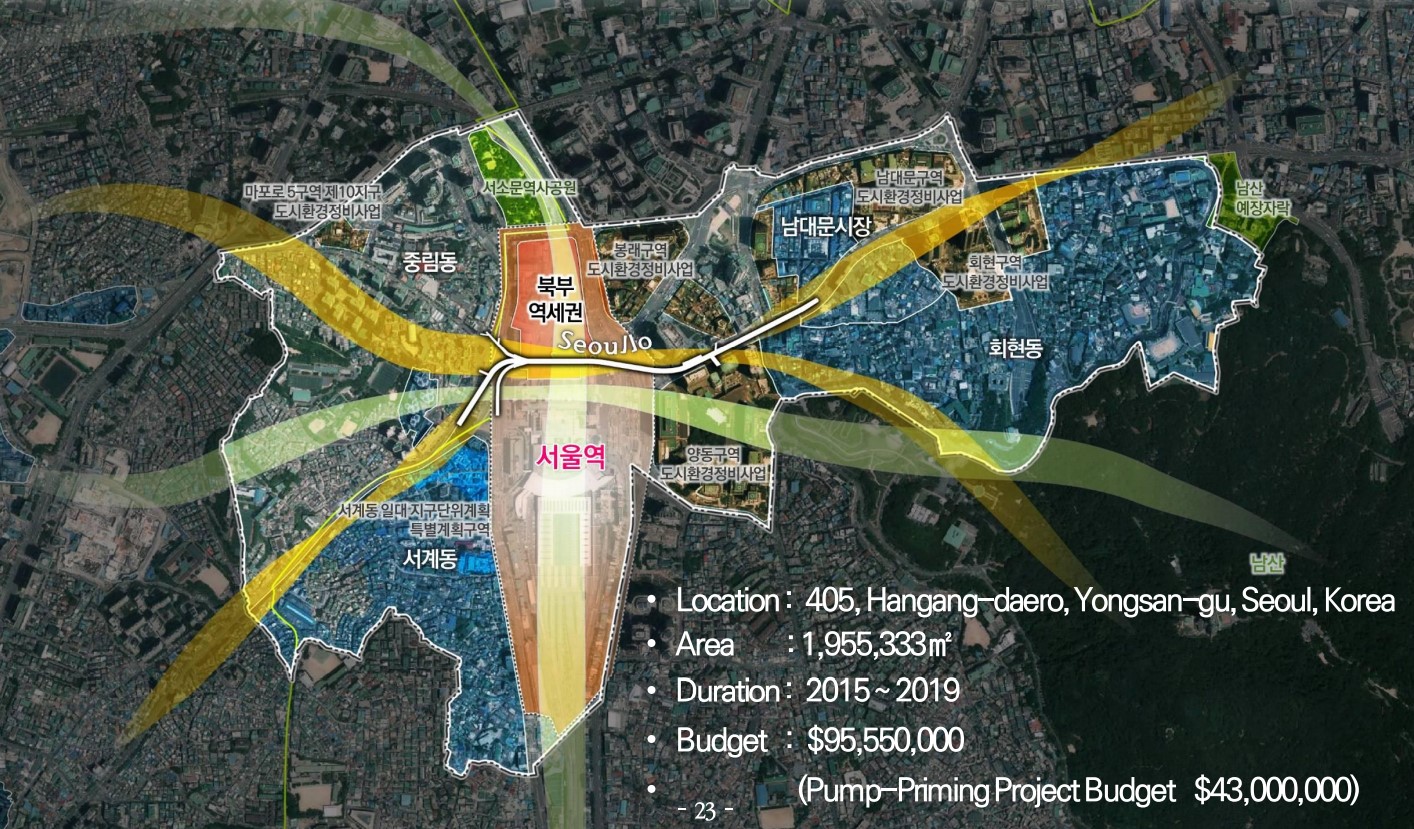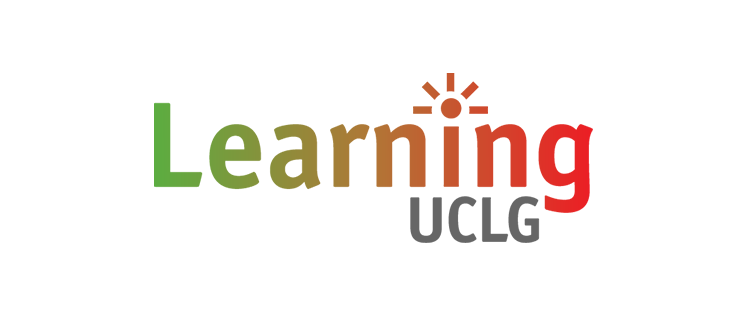 Map - © Seoul Metropolitan Government
Map - © Seoul Metropolitan Government Map - © Seoul Metropolitan Government
Map - © Seoul Metropolitan Government - © Seoul Metropolitan Government
- © Seoul Metropolitan Government
City
Seoul
Main actors
City Government, Community / Citizen Group, other
Project area
Whole City/Administrative Region
Duration
Ongoing since 2016
Showcasing the positive social, environmental and economic impact of a walkable city.
The Seoul Metropolitan Government (SMG) regards walking as the most equitable means of transportation available to citizens. The Walkable City Seoul project was launched to ensure the city is a place where all citizens can safely enjoy walking in and around urban streets and public spaces regardless of whether motor vehicles are allowed or not.
Seoullo 7017, a tourism network that connects 17 pedestrian roads, is an initiative of the Walkable City Seoul project. This urban regeneration initiative aims to revitalize the local economy by promoting walking tours of the city's historical and cultural heritage sites.
This case study was contributed from the UCLG Learning Team.
According to the Walkable and Liveable Communities Institute, walkable cities are defined as: they consider persons, not their automobiles, at the center of the design scale. When we design communities around the human foot, we create places that are socially, environmentally, and economically vibrant.
The concept of a walkable city has been adopted by many cities around the world. In Seoul, citizens, community groups and business have become increasingly aware of the environmental, social, and economic benefits of active mobility and have begun to demand more walkable spaces from the city government.
In 2016 the walkable city became a campaign direction for city development in Seoul.
SMG commenced implementation of the Walkable City Seoul concept in 2017. The walkability campaign included promoting a people-oriented traffic environment to improve the quality of citizens' lives and revitalize the urban environment.
In December 2017, SMG established a comprehensive plan for the balanced development of the east-west area around the Seoul Station, which was cut off by railroads - Seoullo 7017. The urban regeneration project covers a total of 1,955,333 square meters over five areas.
The five implementation strategies as follows:
- Through this project, boost the local economy.
- Aim to be a starting point for transforming Seoul into a pedestrian-friendly city.
- Provide citizens with easy access to historical and cultural heritage sties in the city.
- Encourage citizens to rediscover the merits of the area in which they live.
- City-making with citizens.
SMG improved walking activity by building a pedestrian network connected to Seoullo 7017 - an elevated pedestrian walkway. To encourage the citizens' walking activity to flow into as many areas as possible, SMG fixed connecting pedestrian roads and improved nearby alleys, so citizens experience a safe and pleasant environment.
Increased accessibility to buildings, reinvigorated commercial streets and protocols addressing the safety of citizens have improved the street environment and improved pedestrian safety.
Resident-led urban regeneration such as local festivals and pop-up stores are encouraged and are developed through public recruitment.
The City government has steadily expanded pedestrian-only streets to provide walking hubs for citizens convenience and ensure the community's safety.
To carry out the urban regeneration project near the Seoul Station, SMG organized working groups as follows:
- Seoul Urban Regeneration Center: is a communication channel that connects resident councils with authorities and experts.
- Field Experts: is an advisory group for the urban regeneration plan and basic directions of higher-level plans, such as major issues and strategic plans for the revitalization project.
- Resident Council: is a council established to gather and reconcile different opinions to facilitate participation and agreement of residents.
The Seoul Community Regeneration Cooperative (Seoul CRC) oversees the operation of anchor facilities for residents. The anchor facilities are designed to play a pivotal role as a cultural hub and are being used as public facilities for citizens holding concerts, special lectures, and launching shows throughout the year.
The Seoul CRC is an organization dedicated to urban regeneration. Around 70% of its members are local people, and 30% are professionals and activists of local civic groups in urban regeneration.
A budget of ₩106.8 billion has been secured for 63 projects: 22 projects for local economic revitalization, 12 for improving pedestrian environment, 15 for history and culture regeneration, 8 for life environment regeneration, and 6 for community regeneration. The total budget comprises national funding (20%), city funding (50%), district funding (8%), and private investment (22%).
After opening in May 2017, Seoullo 7017 had over 10 million visitors within a year. In March 2021 the accumulated number of visitors totalled 31 million. The pedestrian overpass allows citizens to freely move between the west and east sides of the Seoul Station. The increased walking activity and pedestrian traffic is stimulating the local area's economy.
Seoullo 7017 has acted as a catalyst for the City's urban regeneration project around the Seoul Station. The successful renovation plan included the repair of eight locations that were 4.2 km long combined and the construction of a plaza where citizens can access the Namdaemun Market.
In November 2019, eight anchor facilities opened to help revitalize the local economy and communities. The income generated from the facilities will help lay the foundation for an independent economic model led by the locals.
Cheongpa Hill House, one of the anchor facilities, houses a café that enables citizens to socialise together and offers cooking classes for citizens. However, it is temporarily closed because of COVID-19.
Pleasant and safe communities are created by improving the pedestrian environment. By prioritizing pedestrians and redesigning spaces around people rather than transport modes will help transform the city. In line with the pedestrian-first approach, SMG has consistently rolled out people-friendly mobility projects, including pedestrian only streets, transit malls, and traffic-calm neighbourhoods that everyone can benefit from and makes the city more liveable.
In 2018, the number of elderly residents comprised over 12% of the city’s population, making the city an ageing society. It is imperative to improve the pedestrian environment, for people with reduced mobility. It is also necessary to formulate proper pedestrian policies to which citizens can adhere too.
Additionally, there are still many things that need to improve, such as narrow alleys, dilapidated buildings, illegal parking, and fire- and crime-prone environment.
Many residents and businesses have participated in this project, however, more active collaboration with citizens is needed, along with increased cooperation with the community organizations already involved.
Many countries, including Hong Kong, Singapore, Japan, Sweden, and the United States, reached out to the Seoul Urban Regeneration Center to learn what contribution Seoullo 7017 has brought to the local area and economy; whether more people were walking than before; and how fond residents have grown of their communities through the regeneration project.
Seoullo7017 website - seoullo7017.co.kr/SSF/GLO/ENG/M000.do
On Map
The Map will be displayed after accepting cookie policy

